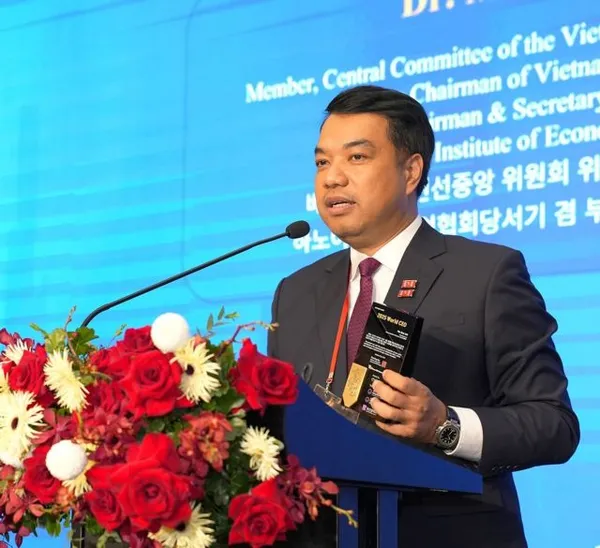 Talking Shop
Talking Shop

High stockpiles coupled with fierce competition from cheap imported steel are hitting the domestic steel industry which is already under scrutiny regarding its impacts on the environment. President of the Việt Nam Steel Association Hồ Nghĩa Dũng speaks to bnews.vn on the necessity of investments in steel production as well as what should be paid attention to when investing in steel projects.
 |
| Hồ Nghĩa Dũng |
What is the situation of current supply and demand balance of the domestic steel industry?
Regarding construction steel, consumption totals are around 7 million tones per year, of which 5 million tones are produced by local plants while the rest are imported. Meanwhile, the total production capacity of construction steel in Vietnam is actually around 12 million tones.
Similarly with steel ingots, production output is around 12 million tones, nearly doubling the domestic market demand.
The domestic steel industry is still not running at its full capacity, due to low domestic demand.
In addition, the industry faces competition from cheap steel products imported from China. Last year, steel imports totaled millions of tones in both completed products and ingots, which impacted market shares as well as the operation capacity of local producers.
However, for steel pile, galvanised steel and cold-rolled steel, domestic consumption is good and so are the export numbers. Vietnamese local producers such as Hoa Sen, Phương Nam, Nam Kim and Đông Á show strength in these products and advantages for exports in Southeast Asia region.
Given that the domestic steel industry still fails to run at its full capacity and imports offer heavy competition, do we really need to invest in steel production?
We still have to invest in steel production. People must consider which investments should be made at which stages, which time, in which scale and technologies, in order not only to control the environmental impacts but also to ensure the competitiveness of products.
In the current market, the steel association will not encourage new investments in steel ingots and pipe production because supply is exceeding demand significantly. Investments should be rather poured into improving product competitiveness, reducing wastes and easing impacts on the environment. The association encourages intensive not extensive investments.
For cold-rolled steel sheets, hot-rolled steel and alloy steel, producers can expand investments. We have advantages in those exports.
In the long term, industrialisation is still the path that Việt Nam must take, so the development of the steel industry is indispensable. The thing to consider while developing the steel industry is consumption.
Vietnamese consume around 200 kilograms per head per year, still low compared to the world’s average level of 220-230 kilograms, China’s 400 kilogram, or Europe’s 600 kilograme.
That having been said, local steel consumption is expected to rise to 250-300 kilograme per year.
Hence, steel producers must base their estimates on consumption demand and other economic indicators—like gross domestic product and construction industrial index—for investment decisions.
Especially, investments should not be scattered, in both capacity and technology, in order to enhance competitiveness.
How can we balance the benefits of importing steel and using locally-produced steel?
The steel industry is faced with inventories at the moment, but the inventories are of several kinds of steel products, while many types are in a shortage.
For products that Việt Nam’s steel production can meet the local demand, imports should be limited to encourage local production. Trade defense instruments should be considered.
Việt Nam needs to import steel products that the local industry still fails to produce. However, we encourage investments in producing these products.
However, protecting local production by using trade defense instruments remains a short-term measure. Enhancing competitiveness and product quality of domestic producers, these are our greater goals. - VNS
Inbox
VN to build modern steel industry
HÀ NỘI – The master planning of the steel industry must focus on building a modern and sustainable industry, according to Deputy Prime Minister Trịnh Đình Dũng.
Dũng also asked that global and domestic steel demand be reviewed as the basis of the development of a master plan to 2025 with a vision to 2035, which would aim to restructure the industry, as well as focus on its modernisation and sustainability.
The development of steel production and distribution systems must be in line with the country’s socio-economic development and its international integration progress, Dũng said.
Accordingly, the application of advanced technologies would be promoted to improve resources and energy efficiency, along with protecting the environment. Further, scattered production and outdated and energy-consuming technologies would gradually be eliminated.
Dũng also asked ministries and authorities to tighten the management of compliance with environmental regulations by the country’s steel companies. Steel plants, which fail to meet the national technical environmental standards, would be strictly handled, even shut down.
Additionally, Dũng asked the Ministry of Finance to revise tax policies in order to promote the development of a sustainable industry.
Developing a sustainable steel industry became pressing for Việt Nam after alarm bells were rung following the largest-ever environmental pollution, which struck the central coast, having been caused by Taiwanese firm Hưng Nghiệp Formosa Hà Tĩnh Steel Corporation. - VNS




